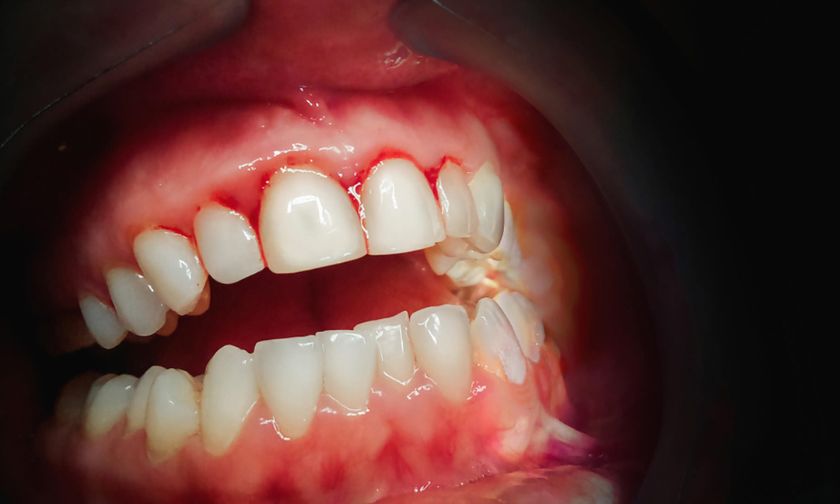
Your gums aren’t just there to frame your teeth—they’re the unsung heroes of your smile. But when they become sore, swollen, or start bleeding, it’s not just uncomfortable—it’s a signal that something’s off. And while occasional gum irritation might seem harmless, ignoring it can open the door to serious issues like gum disease or tooth loss.
The good news? You don’t need complicated routines or expensive products to keep your gums in check. A few smart daily habits can help you prevent discomfort and keep your mouth healthy. Here are four tips that actually make a difference.
1. Master the Art of Gentle but Thorough Brushing
Brushing your teeth isn’t about force—it’s about technique. A lot of people think that scrubbing harder gives a deeper clean. Not true. In fact, over-brushing or using a toothbrush with hard bristles can irritate your gums, making them sore and more prone to bleeding.
Use a soft-bristled toothbrush and angle it at 45 degrees toward the gum line. Use small, circular motions, not back-and-forth scrubbing. Aim for two full minutes twice a day. Electric toothbrushes can also be helpful, especially ones with pressure sensors to avoid overdoing it.
Also, don’t ignore your toothbrush’s age—replace it every 3 to 4 months or sooner if the bristles are fraying. Old, worn-out brushes won’t clean properly and may even harbor bacteria.
2. Floss Like You Mean It (But Don’t Be Aggressive)
Let’s be honest—flossing isn’t most people’s favorite part of oral hygiene. But if you’re skipping it, you’re leaving behind nearly 35% of your tooth surface. And that’s where plaque builds up and irritates your gums.
The trick is to be consistent and gentle. Slide the floss between your teeth, curve it into a “C” around each tooth, and gently go beneath the gum line. Avoid snapping the floss down—this can cause trauma to the gum tissue.
If traditional floss feels like a hassle, try floss picks, water flossers, or soft interdental brushes. The goal is to remove plaque and food particles without damaging your gums in the process.
3. Don’t Underestimate the Power of a Balanced Diet
What you eat affects your mouth more than you think. A poor diet—especially one high in sugar or processed foods—can increase plaque buildup and fuel inflammation. This puts your gums at greater risk of becoming sore or bleeding.
Focus on incorporating more foods rich in vitamin C, calcium, and antioxidants. Think leafy greens, oranges, strawberries, almonds, and dairy products. These nutrients help strengthen gum tissue and reduce inflammation.
Stay hydrated, too. Saliva plays a key role in neutralizing acids and washing away food particles. Drinking enough water keeps your mouth’s natural defense system in good shape.
And watch the sugary snacks and sodas. Not only do they feed the bacteria in your mouth, but the acid in sodas can wear down enamel and irritate your gums. If you do indulge, rinse your mouth with water afterward and don’t brush immediately—wait about 30 minutes to avoid damaging softened enamel.
4. Stop Ignoring Bleeding Gums—See a Dentist Early
One of the most common mistakes people make? Brushing off bleeding gums as “no big deal.” But if your gums are bleeding regularly—even a little—it’s your body’s way of waving a red flag.
Bleeding gums can be the first sign of gingivitis, the earliest stage of gum disease. Left untreated, this can progress into periodontitis, which can eventually lead to gum recession and tooth loss.
Scheduling regular dental visits—typically every 6 months—allows your dentist to catch early signs of trouble. Professional cleanings remove tartar that you can’t get rid of at home. And if your gums are already inflamed or bleeding, early treatment can reverse the damage before it becomes irreversible.
Even if your teeth feel fine, don’t skip your checkups. Healthy gums are just as important as cavity-free teeth.
Final Thought
Your gums deserve as much attention as your teeth—maybe even more. With the right habits and a little consistency, sore, swollen, or bleeding gums don’t have to be part of your life. Start by brushing gently, flossing daily, eating a nutrient-rich diet, and keeping up with your dental visits.
A healthy smile starts at the gums. So treat them well—they’re holding everything together.

